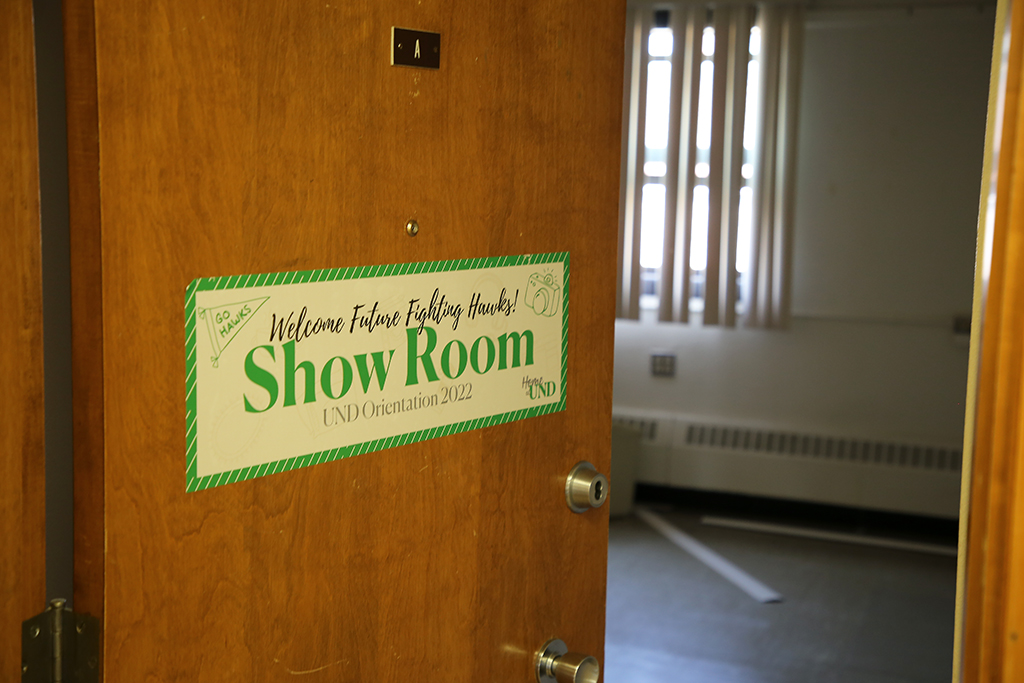Demolition 101: A beginner’s guide to demo
Long fixtures on campus, Squires and Walsh halls are being torn down; here’s how that works

Editor’s note: UND Today offers its thanks to Cynthia Leppke with the College of Nursing & Professional Disciplines for emailing questions that led to the writing of this story. If you would like a story on a particular topic, please reach out to UND Today writers Patrick Miller, Adam Kurtz, Janelle Vonasek or Walter Criswell. Thanks for the interesting idea, Cyndee! Historical information about Squires and Walsh Halls can be found at the end of the story.
****
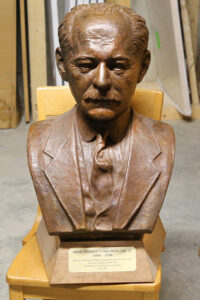
Squires Hall will be gone, but Squires himself will remain.
Well, at least the bust of him will.
That bust is of Vernon P. Squires, dean of UND’s College of Liberal Arts from 1914 to his death in 1930, and the namesake of Squires Hall. The bust is now in storage in a UND Housing basement, having been removed from its place of honor in Squires Hall.
In fact, that residence hall — home to generations of students since its opening 60 years ago, in 1963 — is now empty of most items, as the building is set to be demolished in mid-July. Squires will be the most recent residence hall to be demolished following Walsh Hall, which now lies in rubble just to the north of Squires.
Tearing down the two aging buildings is part of the university’s efforts to right-size its dormitory capacity and remove from UND’s books millions of dollars in deferred maintenance costs.
But what exactly goes into demolishing large brick buildings that housed thousands of UND students? What items get taken out, and where do they put those things? Do they use a wrecking ball? How do demolition workers check to make sure the building is empty? What about utility hookups, like gas?
This process, it turns out, is a task that requires a lot of coordination between UND Facilities Management, Housing & Residence Life and the contractor hired to tear down the building. And it all gets started with an inventory.
“We work really closely with Housing to confirm the inventory of all the contents in there, and we’ll move out the contents that Housing wants to use elsewhere or hold in storage,” said Brian Larson, UND director of construction management. “For the items they don’t want to hold on to, we work with our surplus property managers here and follow the state’s process to properly dispose of them.”
And by “dispose of,” Larson doesn’t mean simply throwing things away. The idea is to find a use for those items on campus, like transferring newer furniture to another residence hall, or putting out the call to other NDUS campuses.
“Two summers ago, Mayville State took a number of truckloads of dorm furniture,” Larson said. “That was nice. That was just a clean transfer through the state process.”
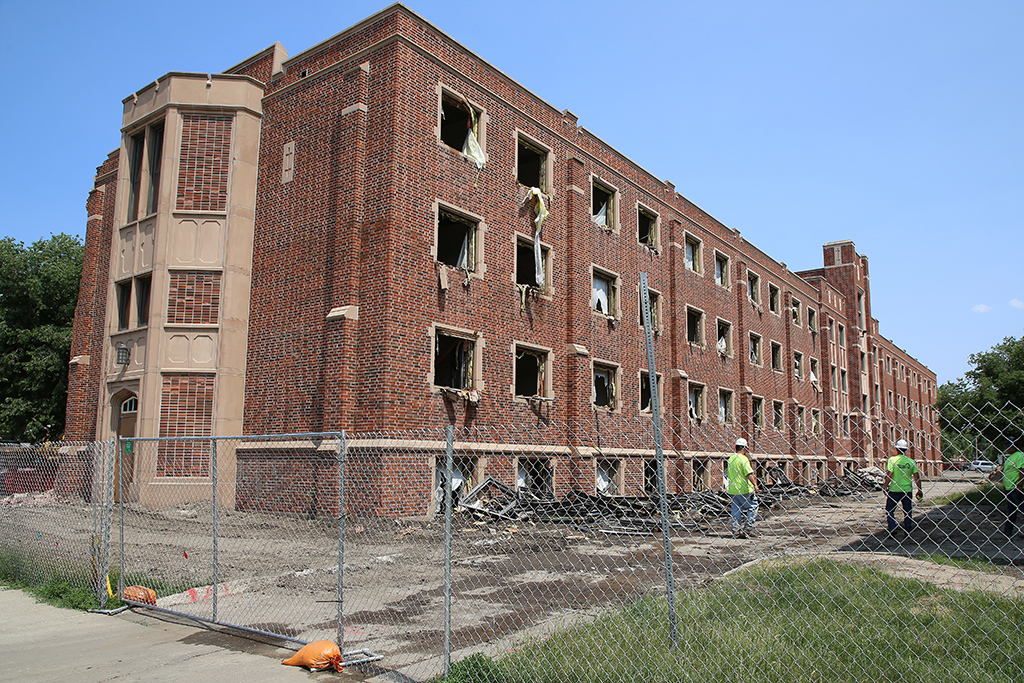
When other campuses don’t have a need for those items, they can be sold at auctions either locally or through the state. Governing this process are state procurement policies for “surplussing,” said Mike Pieper, associate vice president of facilities. The state can take unneeded items and offer them to other state agencies, or efforts are made to recover a portion of an item’s value through auction. This happened recently in Squires Hall, with high-value commercial kitchen equipment.
But sometimes items can’t be sold at auction or are deemed too old or in too poor a condition to be used. In that case, once the surplussing process has played out, some items may remain in a condemned building, and be hauled away with the rest of the debris after demolition.
“Mattresses are tough,” Larson said, giving one example. “Secondhand mattresses are not desirable.”
There are, in fact, several things left in the buildings that will go down with the proverbial ship, but these things tend to be items that most people would call refuse anyway. On a recent trip through Squires Hall, UND Today encountered things left behind intentionally: discarded clothes; old test papers; a booklet on life in a sorority; a miniature Christmas tree set in the corner.
And then there was that bust of Squires. Housing workers told UND Today they didn’t have a key to open the glass case the bust was placed in; so, they broke open the case and brought the bust to storage beneath the Housing Office.
Interesting or historical items such as this are retained in storage, and any objects of art on the walls are checked to see if they need to be returned to UND Art Collections.
When it comes to these unusual items, it’s better safe than sorry.
“We would rather store the bust for a while instead of throwing it away, and then regret throwing it away later,” said Troy Noeldner, UND director of housing.
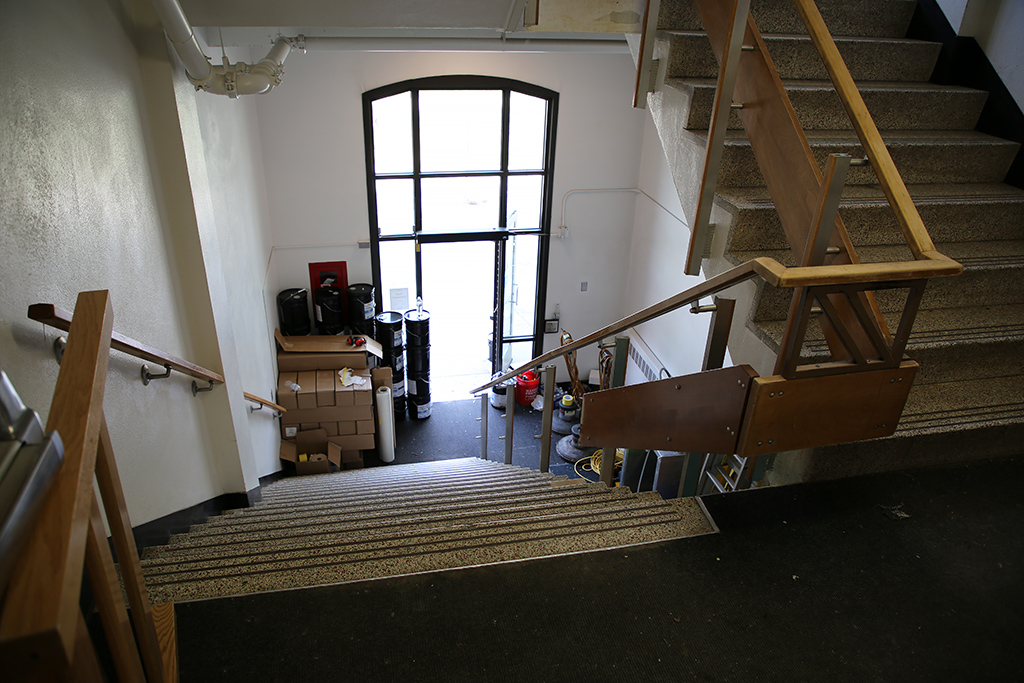
The inventory tends to add up quickly, including things not officially on UND’s roster — items that residence hall governments bought on their own, such as pool and foosball tables. And paperwork needs to be completed on virtually every item from every building, including those from Bek and Hancock Halls, part of the Walsh housing complex, which were torn down in the summer of 2022.
“It’s quite time consuming when we have more than 5,000 items that we surplus,” said Mark Lien, director of finance and facilities for the Housing office.
Pieper said there is a lot of salvage work that goes on as well. Certain electrical components from elevators are saved, as are drinking fountain components, along with the sump pumps that were installed outside Walsh Hall. In the basement of Walsh were a pair of industrial water heaters, and crews had to smash a hole in the wall to remove them. The heaters are valued between $20,000-$30,000 each, and still have about a decade of useful life left, meaning UND now has a few spares should an existing heater breaks down.
After inventory, surplussing and salvage, there is an environmental review. An outside company is brought in to assess any potential hazards to the environment or to people. The assessment can lead to asbestos abatement, and all the fluorescent light tubes are removed, as are mercury thermostats.
But how do demo crews know that a building is empty before demo? “That’s a good question,” answered Larson.
UND facilities staff and their safety department members walk through every nook and cranny of the building to make sure no one is inside. The doors are then locked and the cores — the cylinders encompassing the keyholes — are removed, rendering the doors permanently locked.
The building is then turned over to a contractor, who does a final walkthrough before the heavy equipment is brought in.
The demo is done by backhoes, not wrecking balls. The latter piece of equipment would be used on taller buildings, but is too dangerous to use on structures the size of Squires and Walsh.
The idea is to take the buildings down as quickly as possible for safety reasons, then the contractors can take the needed time to haul away the rubble,” Pieper said. “Workers dig into the building with backhoes to topple the structure. Then, a backhoe operator maneuvers the vehicle on top of the pile. This allows for more efficient loading of the debris, by shortening the swing of the loader.
“It takes them a month to haul away the pile, but getting it into a pile doesn’t take long,” he said. “They don’t want to stop. They don’t want people going back in, so they just keep going.”
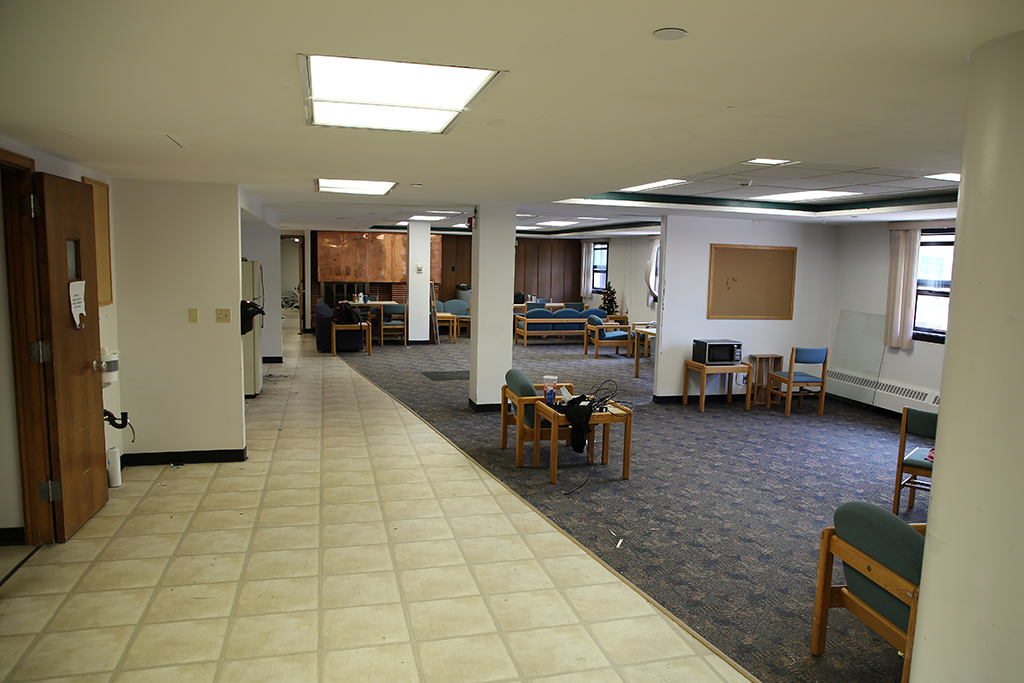
Utilities have to be unhooked as well. Larson said that means removing sections of pipe that attach a building to a main line, such as a gas pipe, for example. Doing so means removing a “T” joint in a pipe, and putting in a straight connection, so there aren’t “dead,” or unattached sections of pipe remaining underground.
Clearly, demolishing a building is a big job; but once completed, it paves the way for redevelopment of the section of land. It also provides for removing old inventory (some wooden dorm furniture was more than 30 years old) from UND’s books.
As for the bust of Squires, it remains in storage and on the inventory list. That’s certainly a better place to be than a landfill.
Historical information about Squires and Walsh Halls
Work began on Squires Hall in 1962 and was completed in the fall of the following year. It was built to replace an old wooden dorm known as Princeton Hall, so named for the street on which it was located. The new building was actually called Princeton Hall at first, and was rededicated as Squires Hall in 1964.
Vernon P. Squires came to UND in 1897, as a professor of English. In 1904 he established Founder’s Day, which marks the anniversary of the signing of the Dakota Territory legislation that established the University of North Dakota in Grand Forks. Founder’s Day, or UND’s birthday, is celebrated each year.
Squires Hall housed male students in the 1960’s, and in the early 70’s became an all-female dorm, to accommodate the increasing number of women on the campus. According to the document “UND Housing: Serving You for 125 Years,” which is available online at UND Scholarly Commons, “In 1981, Squires Hall, known by many as ‘the convent,’ was the last residence hall on the UND campus to change the visitation policy and to abolish the practice of male sign-ins.”
Walsh Hall was one of the largest residence halls at UND and was built in 1959. An addition was added to the building in 1962. Walsh was known for its “modern conveniences” such as built-in closets and phone lines in each room. It was the first residence hall on campus to get cable TV in 1979.
The building was named after George H. Walsh, who was integral to the establishment of the University. After serving in the Civil War, Walsh came to Grand Forks in 1875, and started the region’s first newspaper, a weekly publication called “The Plaindealer.” He presided over the first organized government of Grand Forks in 1878 and was a member of the upper house of the Dakota Territory Assembly from 1879 to 1885, and then again in 1889.
Had Walsh not served in the Assembly, things in Grand Forks might have looked a lot different today. That’s because in 1883, he introduced the bill that established Grand Forks as the location of UND.
Walsh Hall has seen its share of tough times. According to “UND Housing: Serving You for 125 Years:” “Walsh Hall passed through several unfortunate events: a vandalization of its doors with police intervention in 1979, a rain flood in the basement, central kitchen, and television area in 1981, a fire in the kitchen stopped by two resident assistants in 1992, and two bomb explosions in 1994. However, these accidents have not affected the structure of the building, or the spirit of the hall’s inhabitants.”
